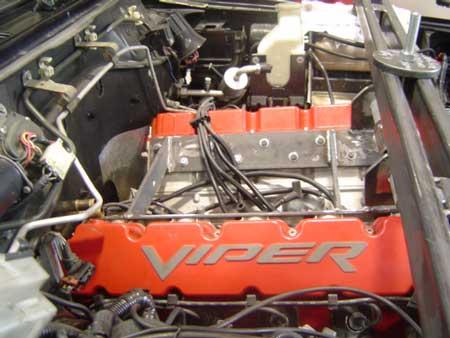|
Do you find your 4WD hasn’t get enough power to get you up steep hills when you’ve a load of people and camping gear on board? Or do you want to get a grip on rising fuel costs and make your vehicle more economical? There are various ways of getting more performance or economy – but where do you start? Well, in the pre-electronic days we’d start by looking at ways to improve the airflow through the engine by modifying things such as the inlet system, the cylinder head or heads, and the exhaust system. You can also look at increasing the engine capacity to increase torque, or even fitting a bigger and more powerful engine. For want of a better description we’ll call it “chip technology”. The ECU in modern vehicles has a computer “chip” as its main component, and this contains all the settings that relate to that vehicle’s engine performance. It controls the “spark”, it tells the engine when to inject fuel, on some engines it even controls when and for how long the valves stay open – or the settings for the vanes in the turbocharger, and the amount of air getting into the engine. However, as with most things the manufacturers of motor vehicles opt for average settings that will give a safe margin of error and average performance over the widest variety of working conditions. But that doesn’t mean these are the best, and so what has happened is that clever chaps with computers have worked out the IDEAL settings for your personal driving preferences, and can offer them at very reasonable prices. Usually the chip in your vehicle is replaced by another, but sometimes the chip supplied as standard is re-programmed using a laptop computer that’s temporarily attached to the system. The improvements gained vary according to your needs. If you want more top-end performance, it can be dialed-in. If you want more low-down torque, well you can get that too. But changing the chip – or even the whole ECU - is just a starting point, and if you really want to get into ways of making your car significantly more powerful, extra power and torque can be gained by modifying the engine’s cylinder head, especially on older vehicles. Better gas flow means more fuel/air mixture makes it into the combustion chambers as a perfect mixture, which results in a better “explosion”, which in turn translates into extra power. Changes to the gas flow can start with little things such as ensuring your air cleaner is in working order and not clogged up, right up to smoothing the inlet and exhaust ports. However, beware – if you’re looking for more torque remember that the more you smooth the air flow and increase things like valve lift and valve overlap, the more likely your engine is going to lose torque. It could even become undriveable at low revs. |
The same applies to the exhaust system. Although a free-flow exhaust system can improve the gas flow, and thus top end power, if there’s not enough back pressure in the exhaust system torque can suffer dramatically. A noisy engine is not necessarily more powerful than a quiet one! Adding a “blower” – whether it’s a supercharger or a turbo-charger – has the effect of increasing both power and torque dramatically. However it’s not just a matter of bolting one or the other onto the motor. First up, especially with a turbo, the engine’s compression ratio may have to be lowered, usually by fitting different pistons, but sometimes by the simple expediency of fitting a thicker cylinder head gasket. There’s also the question of “turbo lag”, the time between starting the engine, and getting the turbo up to full speed – about 20,000 rpm – and therefore working at full effect. This can mean a “flat spot” when pulling away if the turbo is not properly matched to the engine. So what is turbo-charging, and why can it give you more power? With only normal air pressure to push air into the cylinder highly tuned naturally aspirated engines can use resonance in the air inlets and valve overlap to increase the amount of petrol/air mixture getting into the engine, but that only goes so far. A turbo is essentially two fans connected to each other via a shaft. One of the fans sits in the exhaust stream and has fins that are spun by the exhaust gas flowing past. Through the shaft and on the other side there is another fan that pumps the air from the air intake to the engine. The air gets pumped through the compressor wheel/fan and is forced towards the outside of the turbo through centrifugal action and then into the engine. You will also need to retune the engine management or better still get an aftermarket ECU that can be tuned to understand the extra requirements being made on the engine. Buying a turbo is a serious business, and unless you really do know what you're doing, buying one off the Internet or some guy down the road can result in serious damage to your engine. And watch out for pirated turbos coming out of China and being flogged on the cheap. It's best to buy turbos from reputable suppliers.
|




